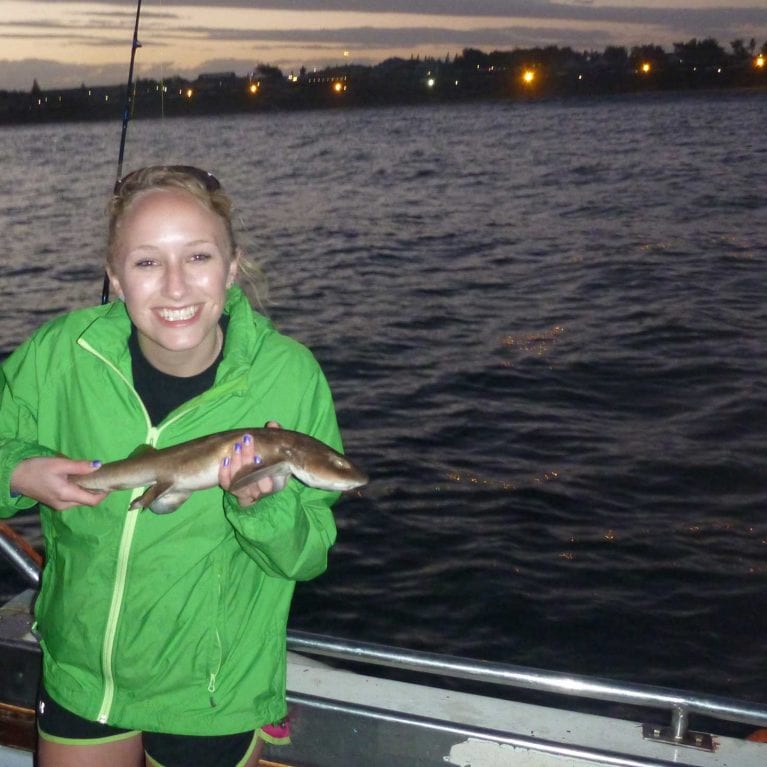Connecting oceanic whitetips
Oceanic whitetip sharks have found a way to thrive in the harsh open oceans, but their pelagic lifestyles have made them vulnerable. Cassandra is using genetics to determine how connected their populations are and which ones are the most threatened.
I vividly remember the first time I saw a shark. I was three years old, watching my older cousin fish off of a dock in Islamorada, Florida. After a hit on the rod he reeled up a bonnethead, a small species of hammerhead shark. Unfortunately, as happens in a number of shark species, the stress of being caught caused the bonnethead to turn its stomach inside out of its mouth. I looked on in both fascination and horror, and I’ve been hooked on sharks and how sharks work ever since.
My interest in science grew as I got older, particularly in...

Determining the global genetic status of a shark of high conservation concern, the oceanic whitetip Carcharhinus longimanus
This project aims to assess the genetic connectivity, genetic diversity and population history of the oceanic whitetip shark Carcharhinus longimanus on a global scale.
A historically abundant pelagic shark, the oceanic whitetip has suffered drastic declines in recent history. The species is listed on the IUCN Red List as Critically Endangered in the north-west and western-central Atlantic, and Vulnerable globally. Genetic information on this shark species is almost non-existent. The information gained from this project is expected to guide management and conservation policies, and contribute to baseline knowledge about the population genetics of this little-understood shark.
The oceanic whitetip shark is built for cruising and it glides through tropical and warm-temperate waters of the open ocean. Once among the most abundant shark species, the oceanic whitetip shark has suffered drastic declines due to its capture as by-catch and direct targeting for its fins. Unfortunately, because of the high market value of oceanic whitetip fins in the international fin trade, the shark continues to be over-exploited.
An important milestone for oceanic whitetip shark conservation was achieved in 2014 when it was added to CITES Appendix II. This listing effectively restricts international trade and will hopefully hinder finning of oceanic whitetip sharks. Although the listing is a major step forward, very little is known about oceanic whitetip population dynamics to be able to inform conservation practices. As a result of many years of international collaboration, the Save Our Seas Foundation’s Shark Research Center has been able to collect tissue samples from oceanic whitetip sharks around the globe. Using molecular and statistical techniques, I am assessing the species’ genetic health and estimating the number of genetically distinct populations of oceanic whitetips in our oceans.
The overall aim of this project is to assess the global genetic population structure, dynamics and demographic history of the oceanic whitetip shark Carcharhinus longimanus. This will be achieved by:
- Assessing the shark’s population genetic structure using multiple, maternally inherited markers (mitochondrial DNA sequences) and multiple, bi-parentally inherited markers (microsatellites).
- Combining the results from both marker sets to derive a holistic picture of past and present population structure and dynamics of the oceanic whitetip shark.

